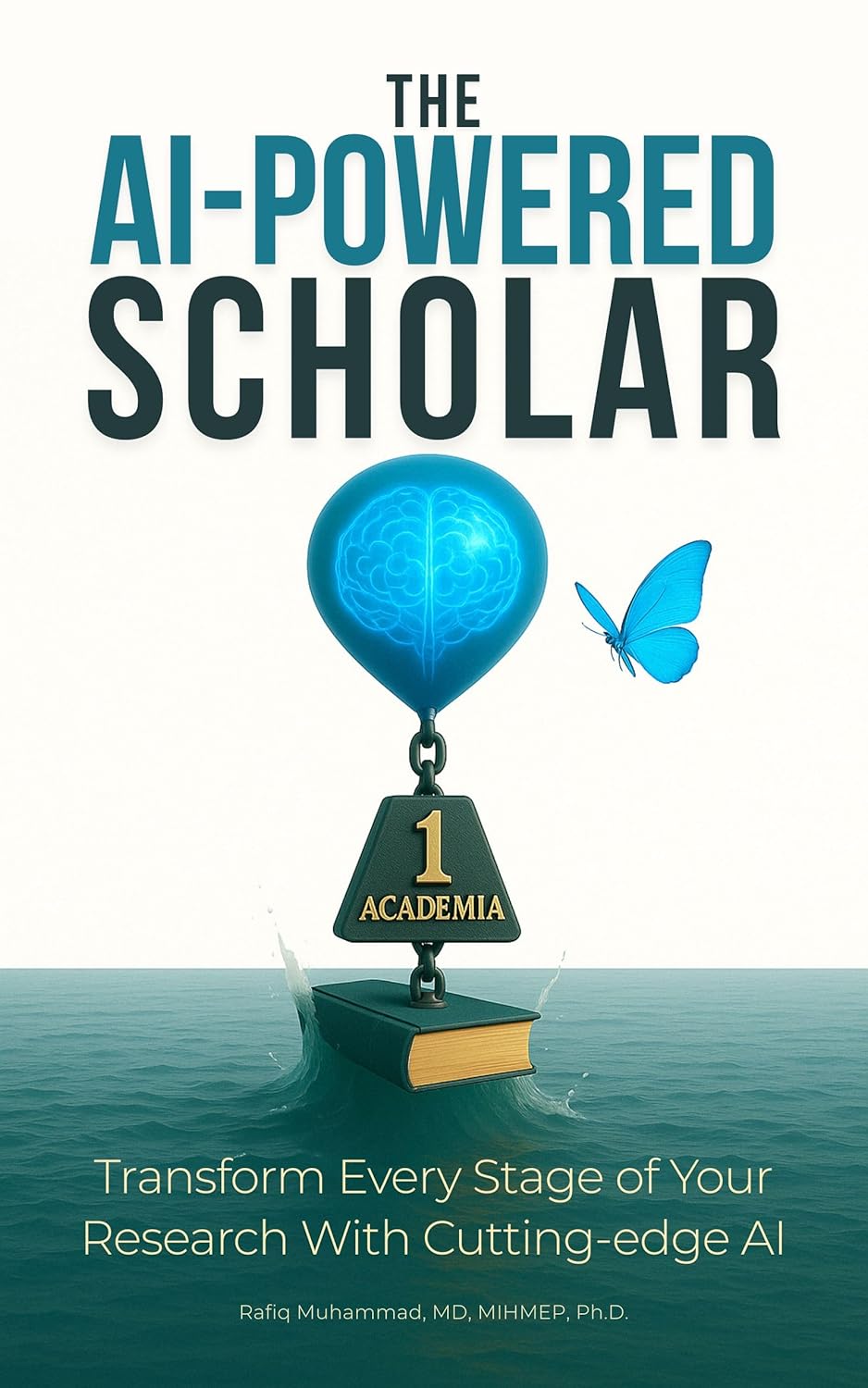The AI-Powered Scholar: Transform Every Stage of Your Research With Cutting-edge AI
The AI-Powered Scholar gives you a stage-by-stage research workflow that integrates ethical AI in research from idea to defense. You’ll use curated AI prompt libraries and a practical tool stack—Semantic Scholar, ResearchRabbit, Elicit, ChatGPT, and Copilot—to accelerate AI literature search, study design, data preparation, analysis, and manuscript drafting, while keeping results reproducible and traceable.
Learn guardrails for AI hallucination prevention, disclosure language, and auditing so your outputs meet transparency and replicability standards. Examples span both qualitative research with AI (coding, memoing, thematic analysis) and quantitative research with AI (data wrangling, exploratory analysis, figure/table scaffolds), plus AI code generation patterns that stay verifiable.
- Stage-by-stage workflows: topic → AI literature search → design → data prep → analysis → writing → defense.
- AI prompt libraries: reusable prompts for discovery, screening, synthesis, critique, and revision.
- Tool stack, explained: Semantic Scholar tutorial, ResearchRabbit mapping, Elicit triage, ChatGPT drafting, Copilot for data analysis.
- Ethical AI in research: disclosure templates, limits of use, and reviewer-safe practices.
- Hallucination prevention: retrieval-first prompts, DOI/PDF grounding, citation checks.
- Reproducible research: logs, versioning, exports, and checklists for research reproducibility.
- Qual & quant with AI: codebooks, themes, and memos; data cleaning, EDA, and visualization scaffolds.
- Manuscript drafting with AI: section-by-section patterns, reviewer-style self-checks, and transparency notes.
- AI workflow automation: repeatable routines for search expansion, document triage, and results tracking.
- Replicability & transparency: audit trails that make AI-assisted decisions defensible.
Adopt a clear, ethical AI research workflow that speeds work without cutting corners—so your manuscript, methods, and evidence trail stand up to peer review.
What’s inside
- Stage-by-stage workflows (topic → design → data → write-up → defense)
- Ethical guardrails, transparency, and reproducibility checklists
- Prompt libraries and reusable templates tailored to STEM and social sciences
Who it’s for
- Graduate students (MA/MSc/PhD)
- Early-career researchers
- Supervisors modernizing research methods with AI
What readers say
“Finally—a responsible way to use AI without cutting corners.”
“Saved me weeks across design, coding, and writing.”
What you'll learn
- Design robust studies with AI as a thinking partner
- Speed up data preparation, analysis, and visualization
- Draft, revise, and polish manuscripts with traceable AI assistance
Frequently asked questions
Can AI write my literature review for me?
No. This book shows how to use AI responsibly for mapping literature, triaging papers, and drafting summaries you verify. You’ll keep control of synthesis, argumentation, and citations—AI assists; it doesn’t replace scholarly judgment.
Which AI tools does the book recommend—and when should I use them?
You’ll learn a practical stack: Semantic Scholar and ResearchRabbit for discovery and clustering, Elicit for paper triage, ChatGPT for structured drafting and critique, and GitHub Copilot for data wrangling and analysis scaffolding. Each tool is mapped to a specific research stage with step-by-step workflows.
Does the book include prompt templates and end-to-end workflows?
Yes—copy-and-paste prompts for searching, screening, summarizing, coding (qualitative/quantitative), figure/table drafting, and responding to peer review. Each template includes guardrails and verification steps to avoid hallucinations.
Is this ethical and compliant with university policies?
Yes. You’ll get disclosure language, verification checklists, and a decision tree for when AI assistance is allowed, how to document it, and how to keep your work reproducible and transparent.
Does it help with both qualitative and quantitative research?
Absolutely. Examples span thematic coding, memoing, and synthesis for qualitative work, and data cleaning, exploratory analysis, and reproducible notebooks for quantitative projects.
How do I prevent AI “hallucinations” and bad citations?
Use retrieval-first prompts, force models to extract from provided PDFs/DOIs, and run citation checks. The book shows repeatable patterns for cross-verification, note-taking, and building a defensible evidence trail.
Will this help me publish faster—without cutting corners?
Yes. You’ll speed up outline creation, section drafting, figure/table generation, and reviewer-response letters—while keeping methods and claims verifiable and within journal ethics.
Do I need paid tools?
No. The workflows are “free-first” with optional upgrades. Wherever a paid tool appears, you’ll find an equivalent free or academic-license path.
Is this book for beginners or advanced researchers?
Both. Beginners get a clear, ethical starting point; experienced scholars get optimizations for screening, synthesis, coding, and collaboration.
Does it cover teaching and lab management?
Yes—scalable feedback, assignment design, rubric drafting, and team workflows so you can teach and collaborate more efficiently with transparent AI support.
